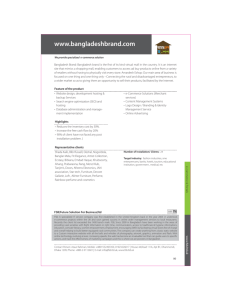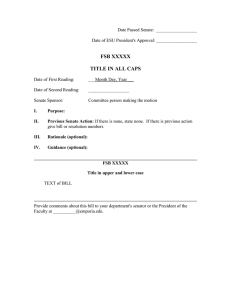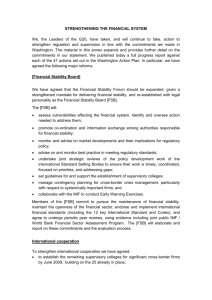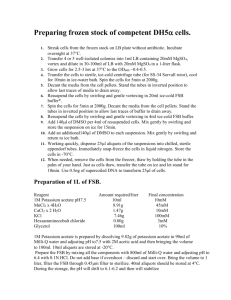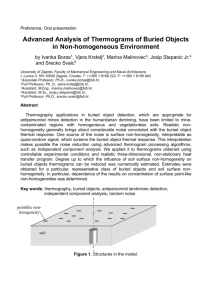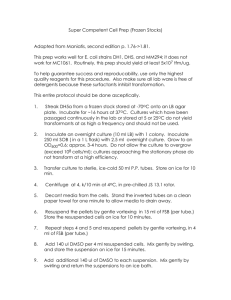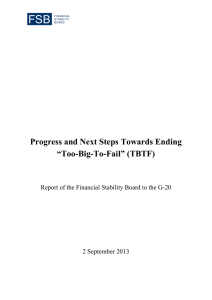FSB Press Release Key Attributes
advertisement
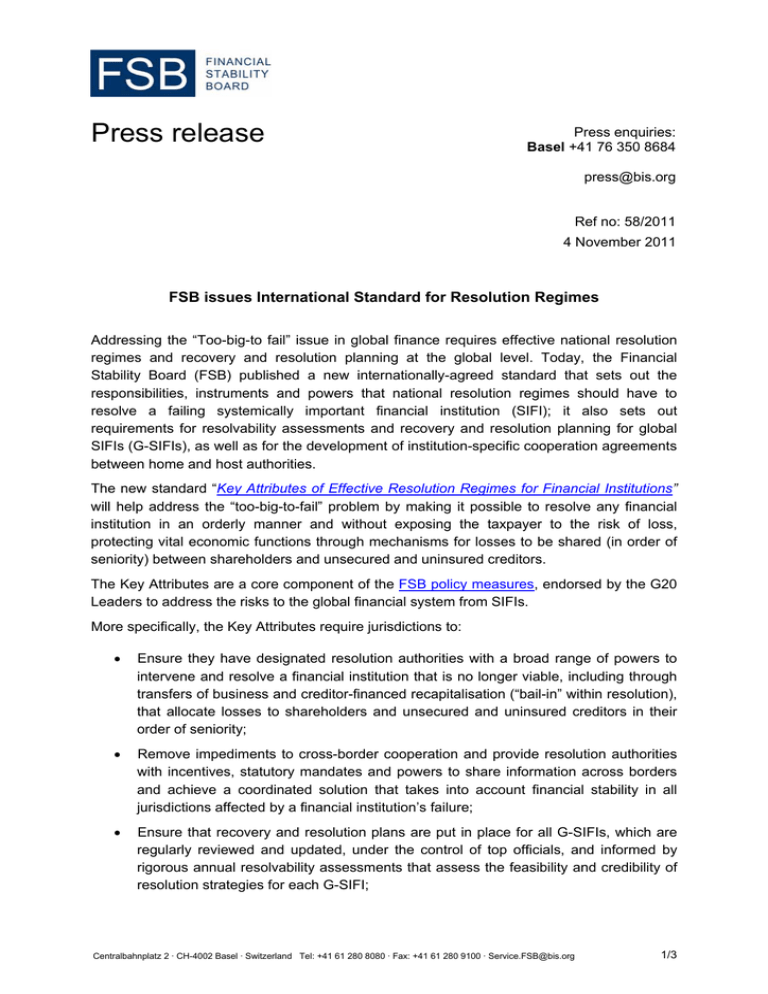
Press release Press enquiries: Basel +41 76 350 8684 press@bis.org Ref no: 58/2011 4 November 2011 FSB issues International Standard for Resolution Regimes Addressing the “Too-big-to fail” issue in global finance requires effective national resolution regimes and recovery and resolution planning at the global level. Today, the Financial Stability Board (FSB) published a new internationally-agreed standard that sets out the responsibilities, instruments and powers that national resolution regimes should have to resolve a failing systemically important financial institution (SIFI); it also sets out requirements for resolvability assessments and recovery and resolution planning for global SIFIs (G-SIFIs), as well as for the development of institution-specific cooperation agreements between home and host authorities. The new standard “Key Attributes of Effective Resolution Regimes for Financial Institutions” will help address the “too-big-to-fail” problem by making it possible to resolve any financial institution in an orderly manner and without exposing the taxpayer to the risk of loss, protecting vital economic functions through mechanisms for losses to be shared (in order of seniority) between shareholders and unsecured and uninsured creditors. The Key Attributes are a core component of the FSB policy measures, endorsed by the G20 Leaders to address the risks to the global financial system from SIFIs. More specifically, the Key Attributes require jurisdictions to: Ensure they have designated resolution authorities with a broad range of powers to intervene and resolve a financial institution that is no longer viable, including through transfers of business and creditor-financed recapitalisation (“bail-in” within resolution), that allocate losses to shareholders and unsecured and uninsured creditors in their order of seniority; Remove impediments to cross-border cooperation and provide resolution authorities with incentives, statutory mandates and powers to share information across borders and achieve a coordinated solution that takes into account financial stability in all jurisdictions affected by a financial institution’s failure; Ensure that recovery and resolution plans are put in place for all G-SIFIs, which are regularly reviewed and updated, under the control of top officials, and informed by rigorous annual resolvability assessments that assess the feasibility and credibility of resolution strategies for each G-SIFI; Centralbahnplatz 2 · CH-4002 Basel · Switzerland Tel: +41 61 280 8080 · Fax: +41 61 280 9100 · Service.FSB@bis.org 1/3 Maintain Crisis Management Groups for all G-SIFIs, bringing together home and key host authorities and underpinned by institution-specific cross-border cooperation agreements. The Key Attributes of Effective Resolution Regimes are the result of work undertaken by the FSB jointly with its members including the IMF, World Bank and the standard-setting bodies. And earlier draft was subject to a public consultation in July and August of this year. Responses to that consultation strongly supported the resolution powers and framework proposed by the FSB (see Overview of Responses to the Public Consultation), and resulted in some technical improvements to the standard. The G20 and the FSB are calling on countries to undertake the reforms necessary to implement this standard. Implementation will require legislative changes, significantly stepped up cooperation amongst authorities across borders and reviews by firms and competent authorities of G-SIFI business structures and operations to improve recovery and resolution planning. Mario Draghi, Chairman of the FSB said: “The big lesson of the crisis is that the world needs a way of resolving any financial institution - no matter what size - if it gets into trouble. The FSB Key Attributes are a breakthrough. They represent a very significant step towards achieving this international policy goal of making too-big-to-fail a thing of the past. Once incorporated into laws, they will provide national authorities with the necessary powers to act swiftly and decisively to carry out an orderly resolution of a failing SIFI. Using those tools, authorities need to re-energize resolvability assessments and planning to address the obstacles to resolution that size and complexity have posed.” Paul Tucker, Deputy Governor of the Bank of England and Chairman of the Resolution Steering Group that developed the Key Attributes, added that “together with the additional loss absorbency for globally systemic banks, the Key Attributes will help to produce a more disciplined and resilient financial system where taxpayers no longer bear the costs of banking failures. The role of bondholders in monitoring banking risks is vital.” The FSB will initiate an iterative process of peer reviews of its member jurisdictions to assess implementation of the Key Attributes beginning in 2012 and extending into 2013. For the initial group of 29 G-SIFIs authorities will have to meet the resolution planning requirements by end-2012. An FSB Peer Review Council will review the consistent implementation of the G-SIFI requirements. The FSB, working with the IMF, the World Bank and sectoral standard setters, will develop an assessment methodology that provides greater technical detail on how the specific systemic risks of particular kinds of institution should be managed in resolution and that can be used to assess implementation. Notes to editors At the Seoul Summit on 11-12 November 2010, the G20 Leaders endorsed the FSB policy framework for reducing the moral hazard of SIFIs. That FSB framework called for action in five areas. 2/3 improvements to resolution regimes so that any financial institution, whatever its size and complexity, can be resolved without disruption to the financial system and without taxpayer solvency support; a requirement that SIFIs and, in particular G-SIFIs, have additional loss absorption capacity beyond the Basel III standards to reflect the greater risks that these institutions pose; more intensive supervisory oversight for financial institutions which may pose systemic risk; stronger standards for core financial market infrastructure to reduce contagion risks from the failure of individual institutions; peer reviews by an FSB Peer Review Council of the effectiveness and consistency of national policy measures for G-SIFIs. The Key Attributes deliver the policy framework in the first area. They complement other elements of that package: the requirement that G-SIFIs should hold additional loss absorption capacity and measures to enhance the intensity and effectiveness of supervision. The FSB has been established to coordinate at the international level the work of national financial authorities and international standard setting bodies and to develop and promote the implementation of effective regulatory, supervisory and other financial sector policies in the interest of financial stability. It brings together national authorities responsible for financial stability in 24 countries and jurisdictions, international financial institutions, sector-specific international groupings of regulators and supervisors, and committees of central bank experts. The FSB’s Secretariat is located in Basel, Switzerland, and hosted by the Bank for International Settlements. For further information on the FSB, visit the FSB website, www.financialstabilityboard.org. 3/3

